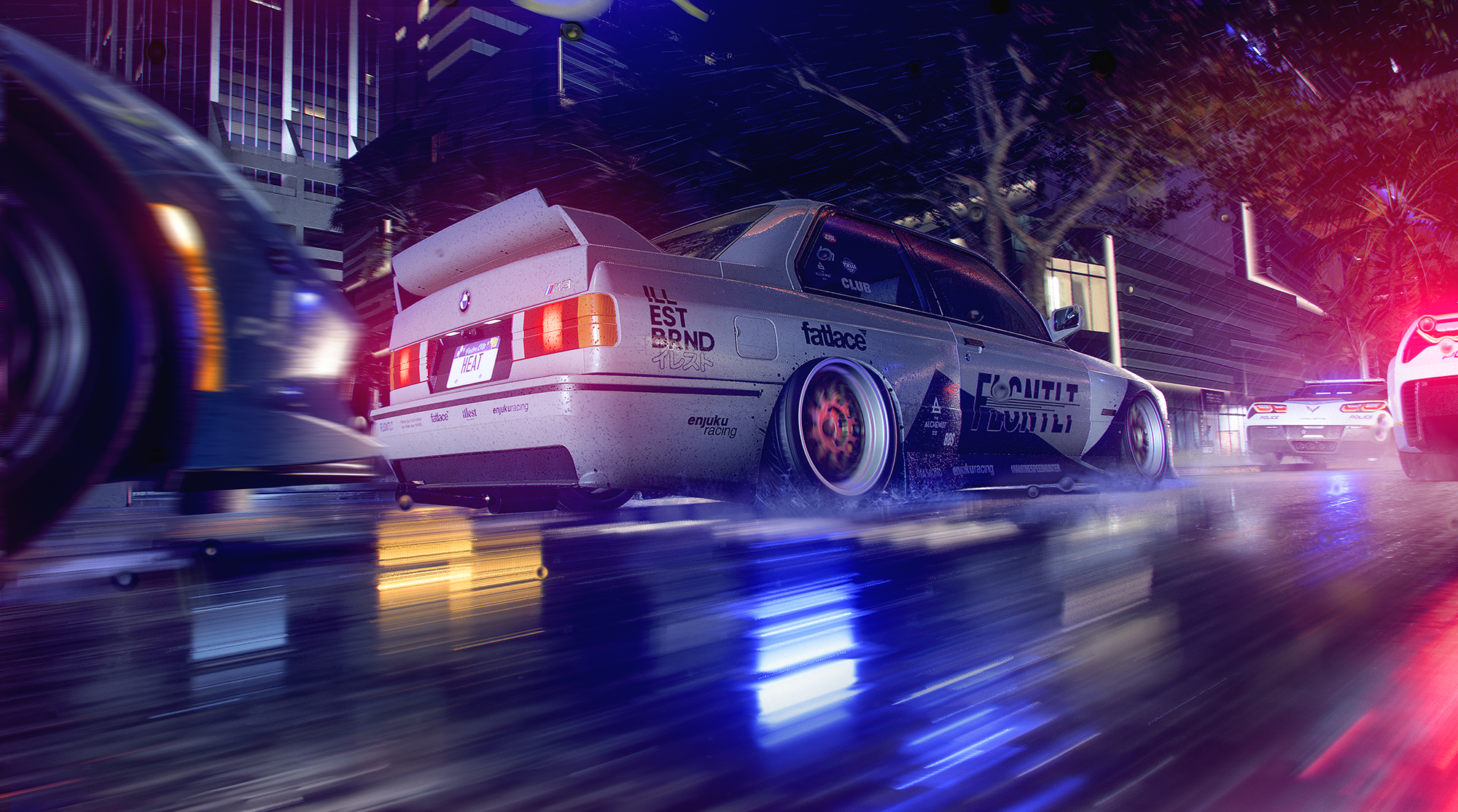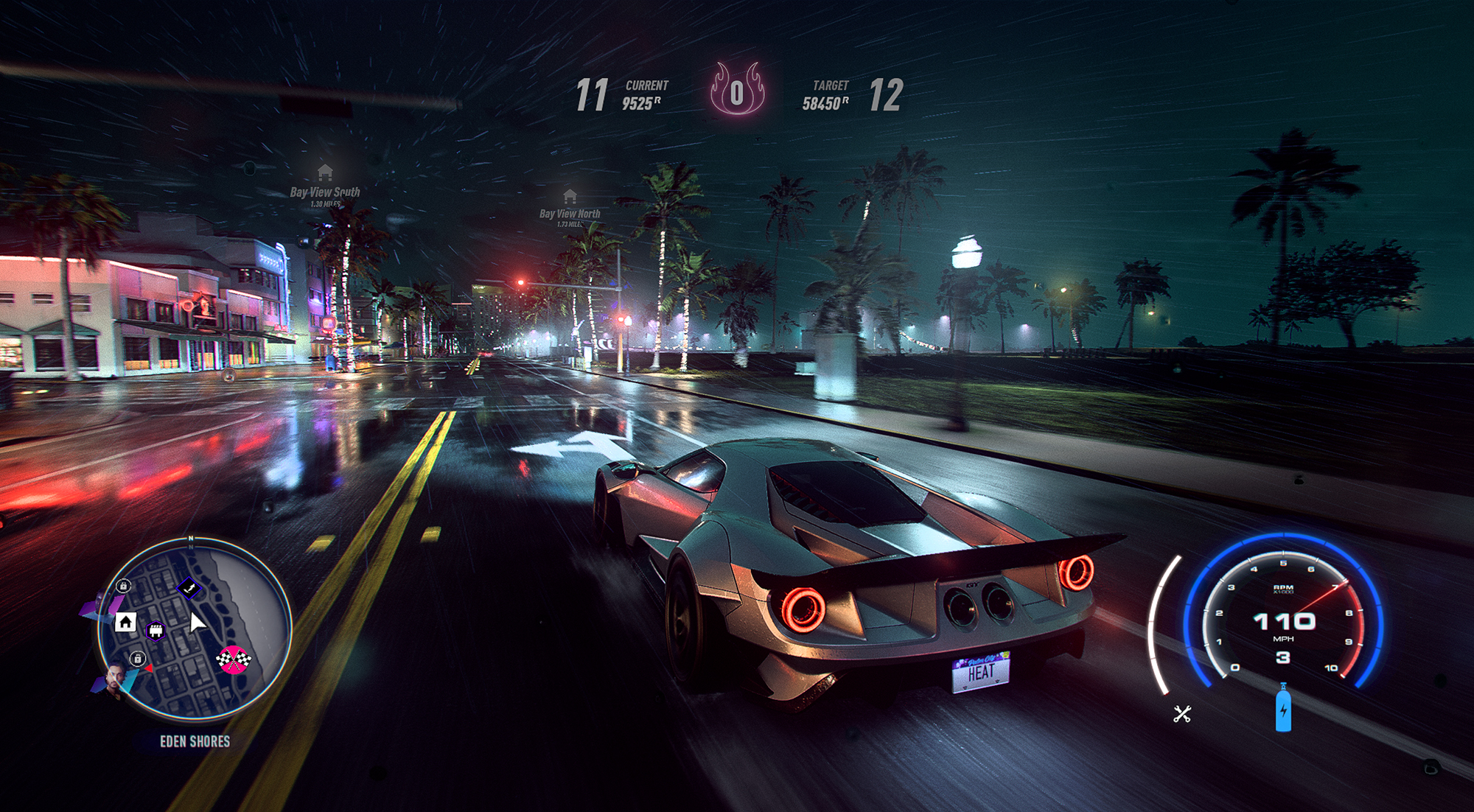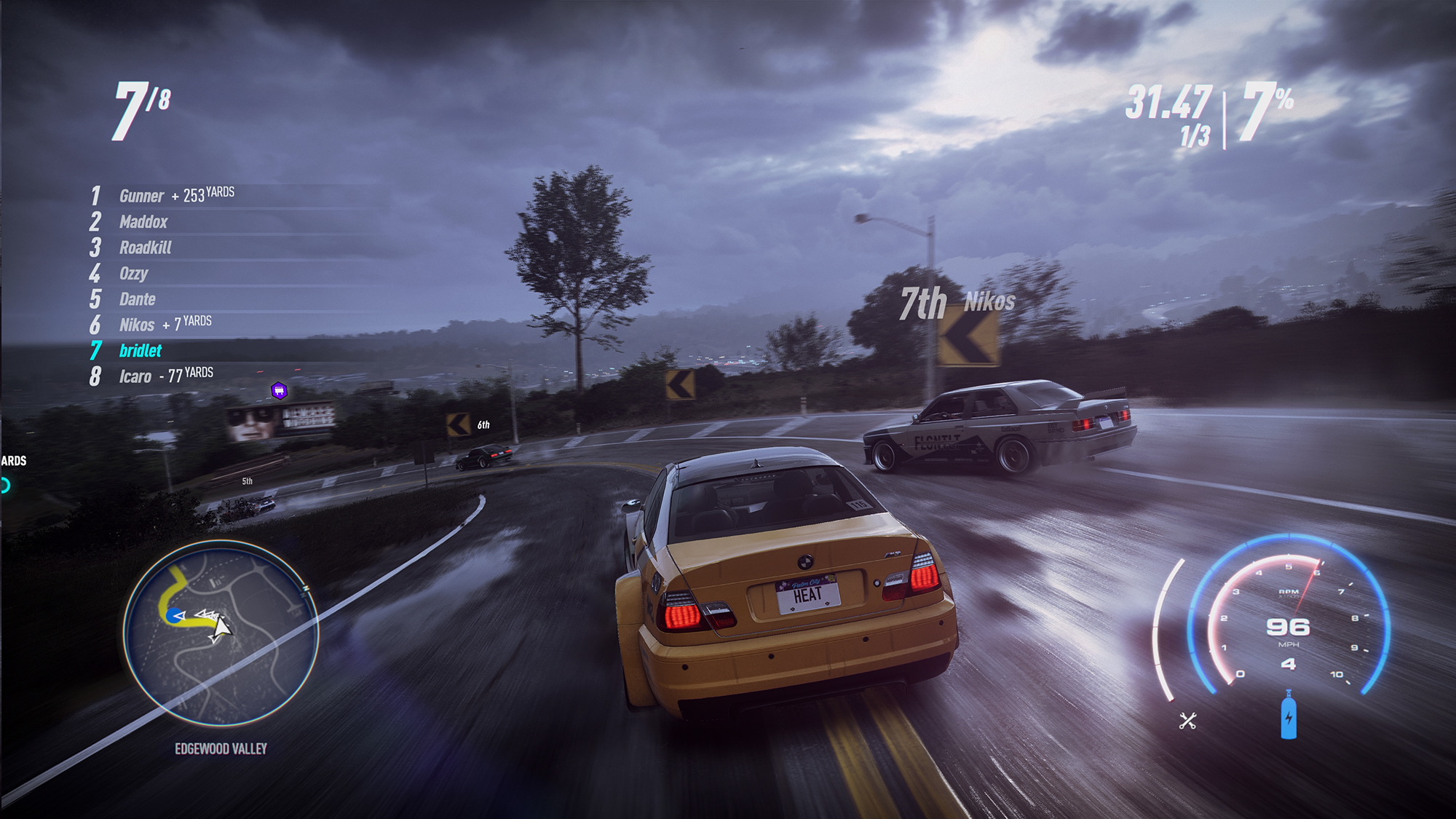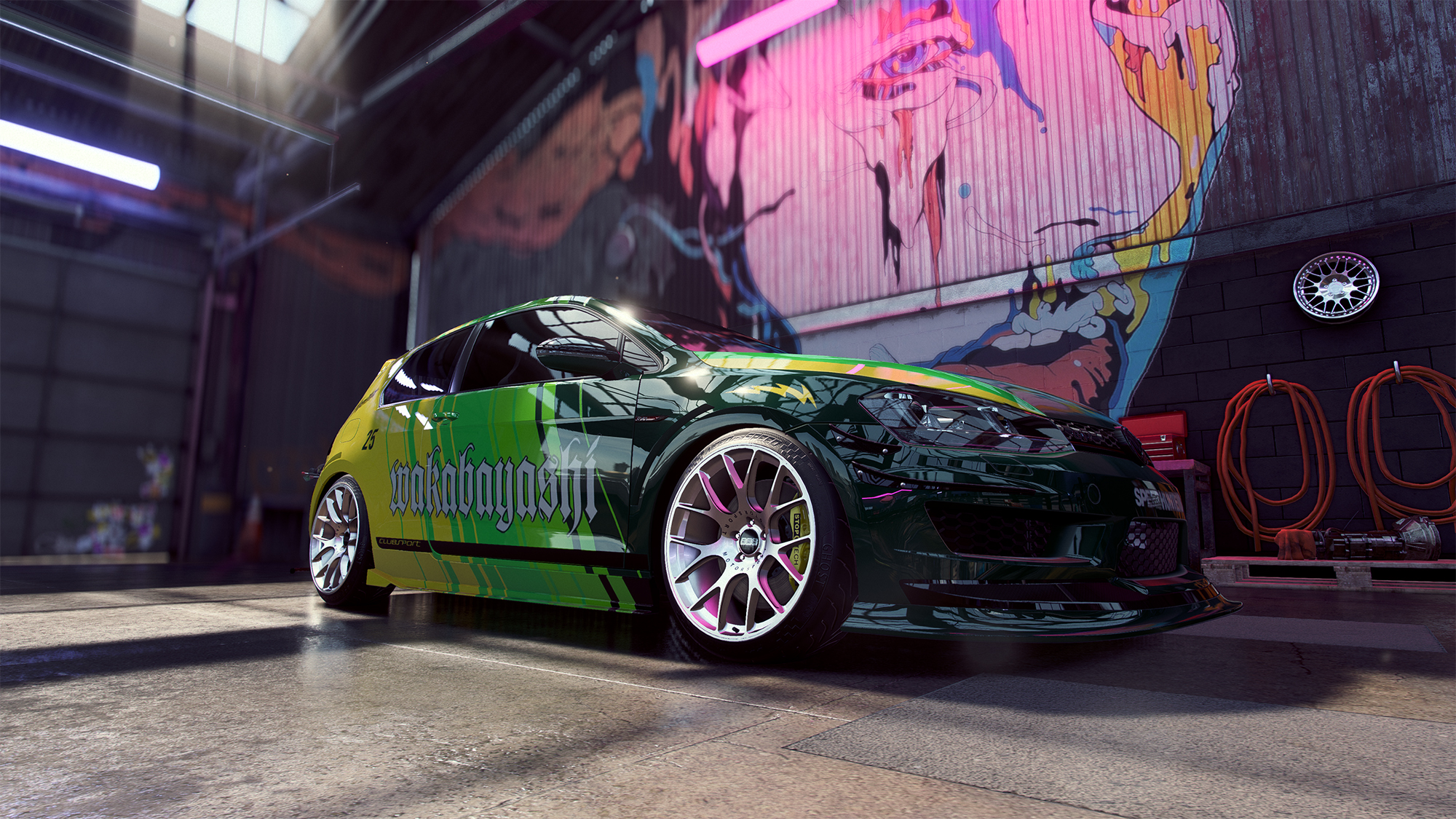NFS Heat is the best Need for Speed in a decade
A love letter to the heyday of street racers

The lure of Need for Speed Heat isn't so much what it has but what it doesn't. Unlike 2017's Payback, the latest installment of EA's perennial street racing series doesn't breathlessly attempt to entice you with microtransactions or leave you at the whim of loot boxes to grow your garage. Every scrap of cash, vehicle, part or shred of reputation is earned.
My God, does it feel good to play a racing game like that again.
Some things annoy me about NFS Heat. The police are far too fast to be outrun in most of the game's cars, making the long-winded pursuits from the Most Wanted days a fool's gambit. The performance on my PC, which can handle Forza Horizon 4 nearly maxed out, is choppy and inconsistent, and full of screen tearing, particularly during cutscenes. The campaign ends abruptly right when things get really interesting, and the soundtrack is lethargic.
And yet, after logging 19 hours in just four days, I still can't pull myself away from it. The last time Need for Speed was this much fun, Microsoft had barely launched the first Kinect. NFS Heat puts a familiar smile on your face, much like reuniting with an old friend.

Finally fun to drive
To understand how NFS Heat succeeds, you need to know where prior entries fell astray. And Need for Speed has endured a turbulent decade, to say the least.
Criterion Games' 2010 Hot Pursuit nailed the basics, while the studio's take on Most Wanted two years later retained none of what made the original Black Box-developed title so beloved. The Run, while ambitious for its narrative, leaned too heavily on scripted set pieces. The same could be said for 2017's Payback, although that entry and Ghost Games' 2015 franchise reboot committed the gravest of racing game sins: disconnected, unpredictable handling.
Questionable physics have long been the bane of EA's racers, but Heat gets off to a promising start the moment you're placed behind the wheel of a souped-up Polestar 1 in the game's prologue. To initiate drifts, you simply let off the throttle and hammer back onto it at corner entry, which, admittedly, reads a bit like "baby's first racing game" at first, but you get used to it.
Get instant access to breaking news, the hottest reviews, great deals and helpful tips.

Although the one-button scheme is somewhat unconventional, it feels better than you'd expect. Plus, it allows you to traverse the entirety of Palm City without fear you'll come across a turn you can't handle. (The exception is in time trial events; those gymkhana-style courses are far too tight for Heat's simplified handling model.) Ghost has also built in some adjustability; you can lighten your car's steering rack, apply additional downforce and opt for brake-to-drift controls, which, in hindsight, make the whole game play more (though not exactly) like Burnout Paradise.
No, the handling isn't totally where it ought to be. Need for Speed is still haunted by the philosophy that a car's tires either grip or don't grip, and there's no middle ground. The best arcade racers — the likes of Driveclub, Project Gotham Racing back in the day and, yes, once upon a time, even Need for Speed — understood that traction is perpetually in flux, based on speed, steering angle, when and where you lay down the throttle, and how all those factors converge to manipulate a vehicle's center of gravity.
Compared to the last two entries, NFS Heat drives well enough — and damn it, I can work with well enough.
Why would Ghost water down the physics model year after year? It's hard to interpret the decision as anything other than an indication that the studio doesn't trust players' car control. Nevertheless, Heat's handling is, mercifully, the step in the right direction the series has so desperately needed for the better part of a decade. Compared with the previous two installments, Heat drives well enough — and damn it, I can work with "well enough."

Risk and reward
You can't throw yourself into hot pursuit if you don't trust the metal and rubber beneath you — which is why it's so important that Heat's handling instills you with the confidence you need to smoke the fuzz.
But those cop chases aren't just fun; they're dangerously addictive, because Ghost has settled upon a clever formula that turns what would otherwise be a boring grind for cash and street cred into a satisfying gameplay loop that has you repeatedly coming back for more.
The premise is simple. During the day, you race in sanctioned events that award you with cash you use to purchase cars and upgrades. However, you can't buy the fastest rides and the best parts unless you build rep, which you can earn only at night, in illegal races and cop chases. Rep also dictates your driver level and, in turn, your progression through the single-player campaign.
Before you know it, you're alternating between day and night runs to maximize your earnings in both currencies. Attaining rep, in particular, requires balancing risk and reward, because the rep you pull in every night is multiplied by your heat level. But if you get busted — which becomes exponentially more likely as your heat level rises and the police throw more units at you — you lose that multiplier, and a hefty chunk of cash as well.

Escaping Level 5 cops is thrilling, but it's also terrifying. Standard-issue Crown Victoria cruisers give way to Corvette ZR-1s, helicopters and spike strips. Nothing will stop the officers from shutting you down, and they'll gladly follow you off the beaten path if you try to throw them off by venturing into the tall grass. And forget about PIT maneuvers. The police aren't satisfied with spinning you out; they'd much rather smash your pride and joy into smithereens.
While longtime fans appear to be split on this, I genuinely think the cops could use a bit of balancing. Don't get me wrong; police should have an advantage. There are way more of them than there are of you, after all, and they have far more tricks up their sleeves. But even the Palm City PD's Level 2 Dodge Chargers stick to you like white on rice, no matter what you're driving, and the subtlest of nudges from your pursuer can do an absurd amount of damage to your vehicle, putting you out of commission, ending your night and making you potentially several hundreds of thousands of dollars poorer. Yes, hundreds — even in this fictionalized Miami, the cops do not mess around.
We don't see enough open-world street racers like this anymore — the kind where stakes are high and the thrill of the chase is insatiable.
The massive risk of losing all that dough often discourages me from attempting crazy-long pursuits — which is really a shame when I recall how much fun I had running epic, 2-hour skirmishes with the authorities in the original Most Wanted.
On the flip side, I really admire Ghost's bravery to just make players work. For example, Forza Horizon 4 is mechanically superior to Heat, but it's a fraction as addictive because it gets the economy all wrong. Rewards flow infinitely in that game, regardless of your performance, and it makes the whole experience feel meaningless. Not so in the world of NFS Heat, where every decision you make carries weight.

Stop and stare
What's the point of a street racer if you can't bolt on absurdly wide body kits and slam your ride's suspension to the ground? Here, Need for Speed has actually led the charge in recent years. Ghost developed a truly powerful customization engine in its 2015 title; the problem was, you'd spend hours in the garage and never want to leave it, because the on-track experience was so poor.
Thankfully, that isn't the case for NFS Heat. That's a relief, because you can create some phenomenal-looking vehicles in this game. You can change everything from bumpers and exhaust tips to wheel camber and tire treads; it's a refreshing breadth of options compared with Horizon's rather limited customization suite. Much like Forza, Heat includes a full livery editor for the artistically inclined.
As weird as it may sound, I love admiring my cars in this game. The reflections and streaks of light that bounce off your vehicle as you work in the garage are stunning. Even the loading screens that pan around your creation, as strobe lights fire in tandem with background music, make the short wait from menus to gameplay feel like well-deserved pauses. NFS Heat is a beautiful game in the day or at night, and even though Florida has never really held any cachet for me, Palm City's map is so diverse — with its beaches, highways and Hollywood-style hills — that I don't have to be prodded to explore.
Bottom line
I can't stress enough how impressed I've been with NFS Heat. Although the game has its faults, we don't see enough open-world street racers like this anymore. The kind where there's always something to do or somewhere to go, but you never feel spoiled for choice. The kind with a purpose, where the stakes are high and the thrill of the chase is insatiable.
In fact, it's the same way I'd describe Most Wanted. For a generation of budding gearheads and gamers, Black Box's 2005 effort remains untouchable. It's still the benchmark of open-world racers that each and every one since has failed to measure up to — even though it wasn't perfect, either.
I wonder if younger players will be lavishing the same praise over NFS Heat 15 years from now. In fact, I'd bet pink slips on it.
Adam Ismail is a staff writer at Jalopnik and previously worked on Tom's Guide covering smartphones, car tech and gaming. His love for all things mobile began with the original Motorola Droid; since then he’s owned a variety of Android and iOS-powered handsets, refusing to stay loyal to one platform. His work has also appeared on Digital Trends and GTPlanet. When he’s not fiddling with the latest devices, he’s at an indie pop show, recording a podcast or playing Sega Dreamcast.
 Club Benefits
Club Benefits





